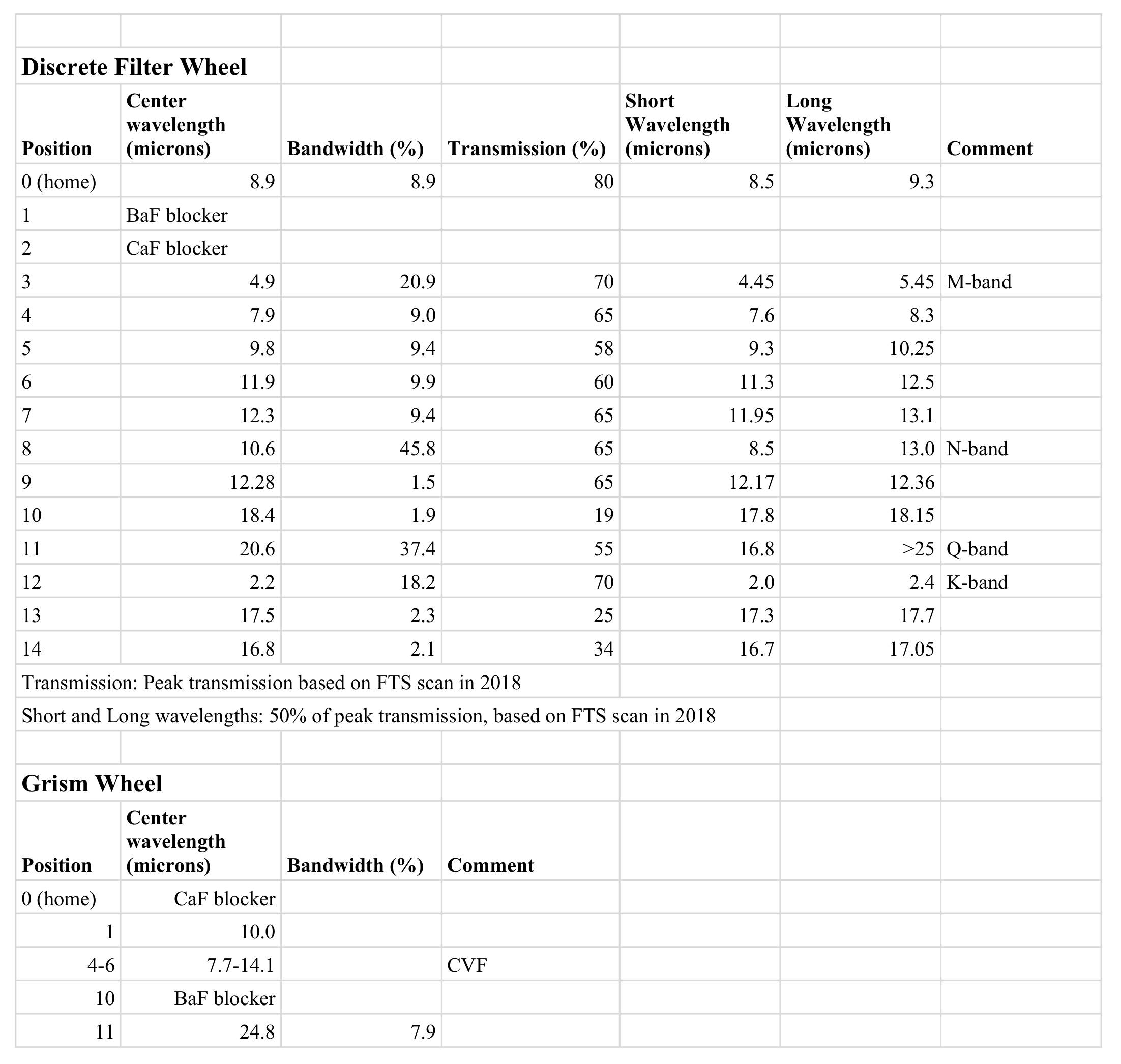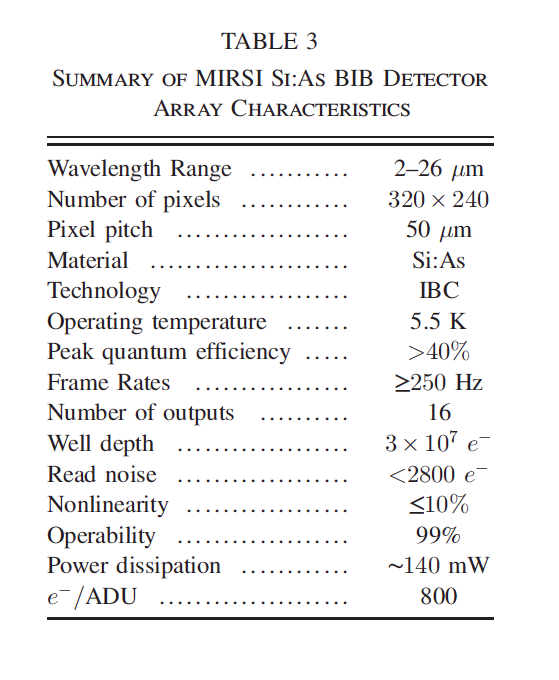Acknowledgements
Observers publishing results obtained with MIRSI are requested to reference the following papers:
MIRSI, A MId-Infrared Spectrometer and Imager: Performance Results from the IRTF
M. Kassis, J. Adams, J. Hora, L. Deutsch, E. Tollestrup, 2008, PASP, 120, 1271
MIRSI: A MId-Infrared Spectrometer and Imager
L. Deutsch, J. Hora, J. Adams, M. Kassis, 2003, SPIE, 4841, 106
The original Boston University web page for MIRSI
Filters
The filters in MIRSI are listed in the following table. The center wavelength, short wavelength, long wavelength, bandwidth, and peak transmission were measured in 2018 at IfA.
Sensitivity
The current sensitivity of MIRSI was measured by observing mu UMa on the nights of Feb 1, 2024, and are provided by Mike Connelley. Please note that the 1 sigma sensitivity in the last two columns is for 1 minutes of integration time, and does not include readout and telescope offset overheads. These estimates should help observers writing propsals to better understand what MIRSI can currently do in a given amount of time. Despite installing a science grade detector, the sensitivity of MIRSI does not seem to have improved, and we are investigating other avenues for improvement.We recently found that the S/N ratio in a given amount of wall clock time greatly depends on the number of coadds used. Coadds=300 seems to be about optimal. At lower coadds, more time is lost to telescope beam switches. At higher coadds, the S/N ratio does not increase as sqrt(coadds). However, the S/N ratio does increase as the sqrt of the number of images that are stacked.
Maximum Exposure Time
The exposure times in the second column are the maximum exposure times that we could use without exceeding the well depth on the sky. Currently, using exposure times greater than 22 ms causes the top ~1/4 of the detector to reset, so if possible observers should use exposure times under 22 ms.Sensitivity with Blind Stacking
Joe Hora reports that he has detected a 424 mJy source in the broad N-band filter in 23 minutes of observing time with a 1-sigma sensitivity of 13 mJy. This was with 500 coadds, and nodding/offsetting on the array. He notes that this is somewhat better than the table above suggests, but he used 10 ms frame time rather than 5 ms reported in the able.On a different object on a different night, he detected a 250 mJy source with a 1 sigma sensitivity of 20 mJy in 40 minutes, also through the broad N-band filter, 10 ms exposure time with 1000 coadds. This sensitivity is more consistent with the values in the table above.
For an explaination of blind stacking, see the description below in the section on MOC.
Detector Properties
This is Table 3 from Kassis et al. (2008)
MIRSI Optical Camera (MOC)
MOC is a visible light CCD camera that is co-mounted with MIRSI. The cold dichroic that was added to MIRSI reflects the IR beam into MIRSI, while the visible light passes through to MOC mounted below MIRSI. It uses the same model Andor EMCCD camera as MORIS, and thus its use and sensitivity will be very similar. Like MORIS, it will have a 1 arcminute field of view.MOC enables:


